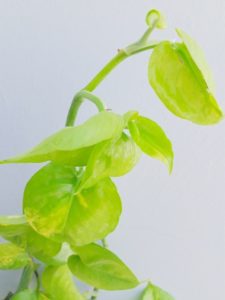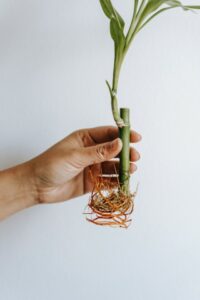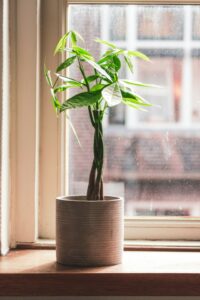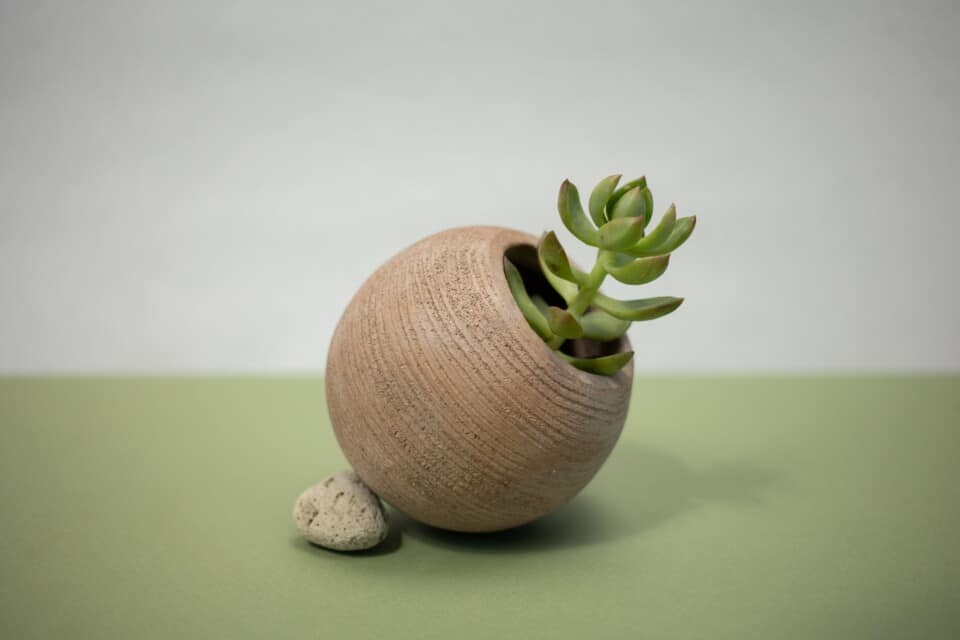Some links in the post are affiliate links and I get a commission from purchases made through some links found in the post.
Both money trees and money plants are thought to bring health, wealth, and prosperity into the home.
They are also widely used in businesses in the belief that they bring regular customers and good fortune to the restaurant or shop. It seems as if the labels ‘money trees’ and ‘money plants’ are almost interchangeable – but are they?
“Money plants” are thought to bring success financially to a home or business but there are many of them for example a Chinese money plant.
“Money trees” are thought to do the same but there is only thought to be on true money tree being the Pachira Aquatica.
So, is there a difference? Let’s look at some money trees and money plants and why people enjoy growing them so much.
Is the Money Plant and the Money Tree the Same?
When we talk about trees and plants we know that trees are plants, in that they grow in the ground and pots. So, while all trees are plants (part of the worldwide plant family) not all plants are trees.
There is a difference, even though it is slight between money trees and money plants. However, both refer to shrubs which are normally grown in pots indoors and are thought to bring good fortune and good luck.
What are the Popular Money Trees?
 There is really only one true money tree, and it can be grown as a dwarf variety or as a regular tree. The dwarf variety will reach around 1’, while the regular tree can reach about 5’ in height.
There is really only one true money tree, and it can be grown as a dwarf variety or as a regular tree. The dwarf variety will reach around 1’, while the regular tree can reach about 5’ in height.
You may have heard of the Pachira Aquatica. This is a dwarf money tree which has the trunks carefully intertwined around each other.
They are often used as additions to décor in homes and they are widely used by people practising Feng Shui, particularly in Asian homes. These plants are believed to bring financial success and prosperity.
To make the braided trunk several plants are grown together and as they grow the seedlings are carefully woven together.
The Pachira Aquatica is also known as the Good Luck Tree, the Provision Tree, Wild Kapok Tree, and Malabar Chestnut, among others.
You will notice that the stems have five leaves on each. These represent earth, water, fire, wind, and metal. Very occasionally you will find a money tree with seven leaves. These are said to bring extra fortune and prosperity to the owner.
If you find yourself with a tree with eight leaves you are super lucky! This is because in Asian culture, the number eight is the luckiest umber of all. Trees with eight leaves are very rare and to have one means you are truly blessed.
If you’re enjoying this article, check out our article on money tree light requirements.
What are the Popular Money Plants?
While there is only one recognised money tree, there are several which are called money plants.
The Jade Plant (Crassula ovata)
This is normally the plant that most people associate as the money plant.
You can also find these in many oriental takeaways, restaurants, and shops and this is because of the plant’s ability to grow and thrive in artificial light conditions. They can also grow in hot temperatures.
Jade plants are often given as gifts, notably wedding presents or housewarming gifts because they last so long. You might easily expect your Jade plant to live up to 50 years and longer!
To learn more about a jade plant, check out our article on why is my jade plant turning brown.
The Chinese Money Plant (Pilea Peperomioides)
This plant is named a money plant because the foliage is flat like a coin. It originated in the Yunnan Province of China and was later discovered in Scandinavia where it was quickly adopted for use in interior design.
Placed against a background of stark white walls, the plant contrasts beautifully.
To learn more about a pilea plant, check out our article on what are the common problems with a pilea.
Golden Pothos (Epipremnum aureum)
This plant is known as a money plant in Southeast Asia. The theory is that the vibrant gold and green colours represent money bills. It does not need a lot of attention and is easy to maintain.
It is also a climber which makes it a popular choice in many households.
This money plant grows rapidly and will happily climb up trellis, canes or in fact anything that is close to it. They also do well as hanging plants with the foliage looking like a cascade of money.
For more information on the golden pothos, we have an article on a Hawaiian Pothos Vs a Golden Pothos.
Some Less Well-Known Money Plants
Swedish Ivy (Plectranthus verticillatus)
This plant originates from southeast Africa, and also goes by the name of creeping Charlie.
You can grow this plant as a hanging basket or even as ground cover outdoors. If grown in a pot indoors then make sure that the plant is not placed in direct sunlight as this can burn the leaves.
Lucky Bamboo (Dracaena sanderiana)
 These are easily found in gift shops and supermarkets. You will mostly find them in oriental supermarkets as they originate from Asia. Thy are believed to bring good fortune and good luck into the home.
These are easily found in gift shops and supermarkets. You will mostly find them in oriental supermarkets as they originate from Asia. Thy are believed to bring good fortune and good luck into the home.
They are easy to grow. In fact, lucky bamboo grows very well in water. You need only keep the roots submerged for it to do well.
This is one plant that thrives on neglect so perfect for anyone who fears they have no green fingers or thumbs.
Holy Basil (Ocimum tenuiflorum)
Holy Basil holds great significance in India where it is used as one of the most powerful medicinal herbs.
It grows outdoors and is often found growing right at the door of an Indian home. It is said to bring health and wealth to the household, and it also acts as a very effective mosquito deterrent.
This plant can be grown inside the house if it is placed close to a west-facing window.
Rue (Ruta graveolens)
You may have heard this called Witchbane, Ruda or even Queen of Grace.
It is a strong-smelling herb which originates from southern Europe and is said to contain medicinal and magical properties which bring good luck, protection, wealth, and good fortune.
This plant can be grown outdoors on a sunny balcony or indoors close to a south-facing window. It needs to have well-draining soil to do well.
The Shamrock (Oxalis regnelli)
Irish legend has it that St Patrick wanted to demonstrate the doctrine of the holy trinity, so he picked a piece of shamrock.
Each leaf is representative of the father, son, and holly spirit, and because of this event, the shamrock is considered good luck.
You can grow shamrock indoors. It needs to be placed close to a window where it will receive a little direct sunlight.
Shamrock also needs some humidity so add a moisture feature to it, namely a saucer filled with pebbles underneath the pot. Keep the soil slightly moist whenever possible.
Hawaiian Ti plant (Cordyline minalis)
This plant which hails from early Polynesian times is said to hold magical powers and will bring you luck and money.
Make sure you use well-draining soil for this plant as it does not do well in moisture. Additionally, keep the temperatures above 50 degrees F as it will not grow below this.
Why are they Called Money Trees?
According to legend the money tree was an answer to a prayer. A poor man prayed for money then found wealth by propagating many trees from one he found in his field.
He credited his newfound wealth to the tree, and this is how the money tree got its name.
You may also like: Why are my money tree leaves drooping
Why are they Called Money Plants?
Money plants, and in particular the jade plant, are thought to resemble money coins. Indeed, many of them are round and flat.
The five leaves on the jade plants stalks represent the well-balanced energy named as the five elements of Feng Shui. These are fire, earth, wood, metal, and water.
Harmony in the home and ensured good fortune is restored when Qi is balanced and can flow uninterrupted.
Money Tree vs Money Plant – What are the Similarities?
The similarities of the money tree and the money plant are very much the same thing. This is because both are normally grown inside, and both are supposed to bring good fortune and good luck.
Neither likes to be grown in a pot with poor drainage and they do not like to be overwatered.
You may also like: Money tree plant problems
Money Tree vs Money Plant – What are the Differences?
The common money plant, namely the jade plant needs at least 6 hours of bright light every day. You need to keep smaller young plants in bright, indirect sunlight until they are established.
Once established they can be moved into places where there is more direct sunlight. However, care should be taken that reflective light through glass windows does not burn them.
Money trees grow better in bright, indirect light. They also prefer humidity which is moderately high. They do not enjoy direct sunlight which can cause burns, although they can grow well in low light areas.
Money trees will not do well if placed near hot vents and heaters, or excessive draughts.
Final Thoughts: Money Tree vs Money Plant
 An important point to consider when choosing between a money tree vs a money plant is whether you have pets in your house.
An important point to consider when choosing between a money tree vs a money plant is whether you have pets in your house.
Money trees grow quickly, they are easy to care for and they can remove toxins from the air. More importantly, they are not toxic for either cats or dogs, so are safe in a home with pets.
Money plants can be very toxic for pets. Indeed, the jade plant is highly toxic and can cause heartbeat irregularities and gastric distress to an animal.
It is a very popular plant to grow indoors but you should make sure that your pets are always kept away from the plant.
Both the money tree and the money plant are said to bring health, wealth, and prosperity, so there is no reason why you should not have either of these great plants rowing in your home.
Whether you believe they will make you rich or not, both are great examples of indoor plants which need little maintenance and still look delightful.
Before you go, here are some more related articles I encourage you to read below to help solve more of your gardening issues:


